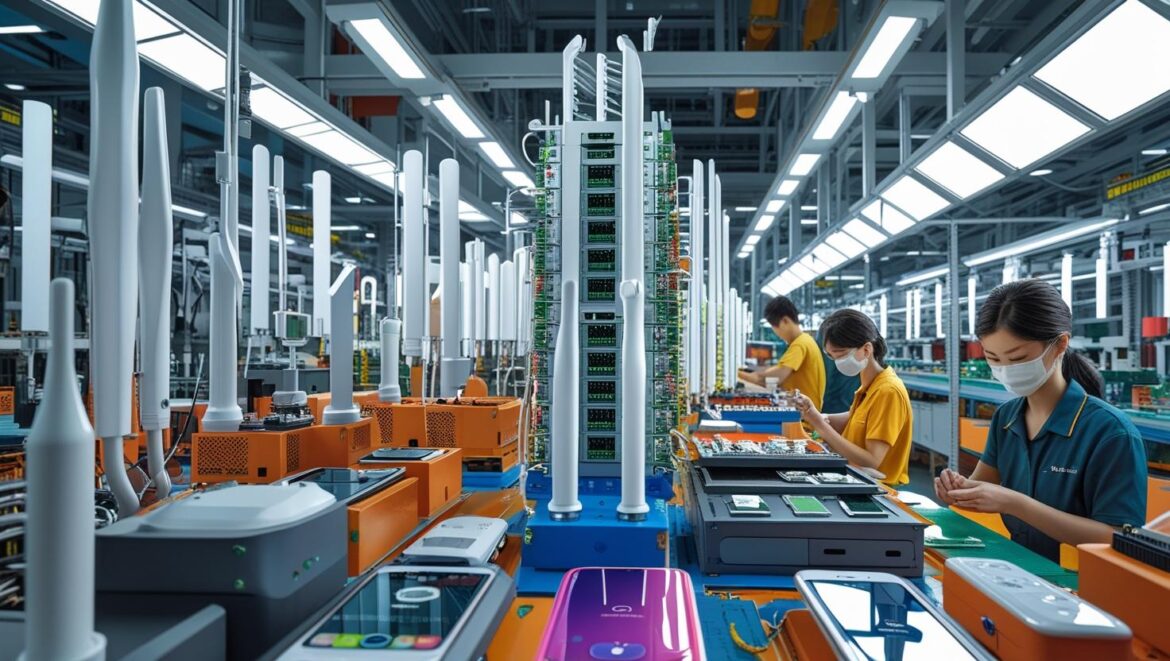India is considering changes to local content rules in its telecom procurement policy that could ease market access for multinational corporations (MNCs) such as Cisco, Ericsson and Nokia, government and industry sources said, raising concerns among domestic manufacturers over a potential dilution of the country’s ‘Make in India’ push.
The Department of Telecommunications (DoT) has launched a public consultation on proposed revisions to the Public Procurement (Preference to Make in India) (PPP-MII) Order, with feedback open until July 3. The draft changes would modify how local content (LC) is defined and calculated in telecom tenders—potentially making it easier for foreign firms that rely heavily on imported hardware to qualify as preferred suppliers in government contracts.
Currently, companies must demonstrate at least 50 percent local content to qualify as “Class-I” suppliers, a designation that grants pricing and selection preference. Those meeting a 20 percent threshold qualify as “Class-II” suppliers, eligible only if Class-I firms cannot meet procurement needs. The framework, last updated in October 2024, covers 36 key telecom equipment categories, including routers, GPON devices and optical fibre.
Imported parts, royalties, overseas technical fees and refurbished goods are excluded from LC calculations under existing rules. While Indian software and design work can be counted, its contribution is capped to prevent artificial inflation of LC percentages without substantial domestic hardware manufacturing.
Global Firms Push for Flexibility
Several global telecom firms have struggled to meet the 50 percent LC requirement, industry experts say. A report by the Global Trade Research Initiative (GTRI) found that MNCs typically operate on low-margin, cost-plus models in India, while retaining most profits and intellectual property (IP) abroad.
For instance, Cisco’s India unit reportedly earns a 5–10 percent profit margin, compared to a global average of 65 percent. Much of the assembly and integration work is outsourced to third-party manufacturers in India, contributing just 10 percent in value addition. Critical hardware such as semiconductor chips, memory and PCBs are imported and account for up to half of product costs, the report said.
To address these challenges, industry sources say MNCs have sought multiple concessions from the DoT, including:
- Increased credit for Indian design and software, even if IP is held by overseas parent companies;
- Exemption of imported hardware components from LC calculations if not available locally;
- New criteria to classify companies as ‘local suppliers’ based on software or integration work, regardless of hardware origin;
- Relaxation of physical manufacturing thresholds.
“If these concessions are accepted, they could allow companies that import most of their product components to qualify as Class-I suppliers by performing minimal software bundling or assembly in India,” a telecom analyst said, requesting anonymity due to the sensitivity of the policy discussions.
Indian Manufacturers Raise Red Flags
Domestic telecom equipment makers, including Tejas Networks, HFCL, and CDOT, argue that the proposed changes could significantly erode their competitiveness in government contracts. These companies, which have invested heavily in local manufacturing, R&D, and IP creation, say they risk losing ground to MNCs with limited domestic production footprints.
“This kind of dilution will disincentivize real IP creation in India,” said an executive at a domestic telecom firm. “It would allow foreign firms to meet local content norms via superficial assembly or software integration, turning India into a repackaging zone rather than a manufacturing base.”
Industry groups also warn that any relaxation could create loopholes for “white-labelling” — where imported equipment is rebranded and sold as locally made — weakening the impact of production-linked incentives (PLI) and other government schemes intended to reduce import dependence.
Policy Crossroads for ‘Make in India’
The DoT has said the consultation aims to address concerns raised by multiple stakeholders, including updating the product list, reassessing the treatment of software contributions, and revising how LC is calculated in bundled software-hardware products.
Prof. N.K. Goyal, Chairman Emeritus of the Telecom Equipment Manufacturers Association of India (TEMA), welcomed the review but cautioned against undermining core targets.
“Difficulties in meeting 50 percent value addition are real, but they should not justify lowering the bar,” Goyal said. “We need a roadmap to help industry reach the threshold, not a retreat from the goal itself.”
The outcome of the policy review, expected after the July 3 deadline, will shape the trajectory of India’s telecom manufacturing ecosystem and its broader goals under the ‘Make in India’ and ‘Atmanirbhar Bharat’ (self-reliant India) initiatives.






